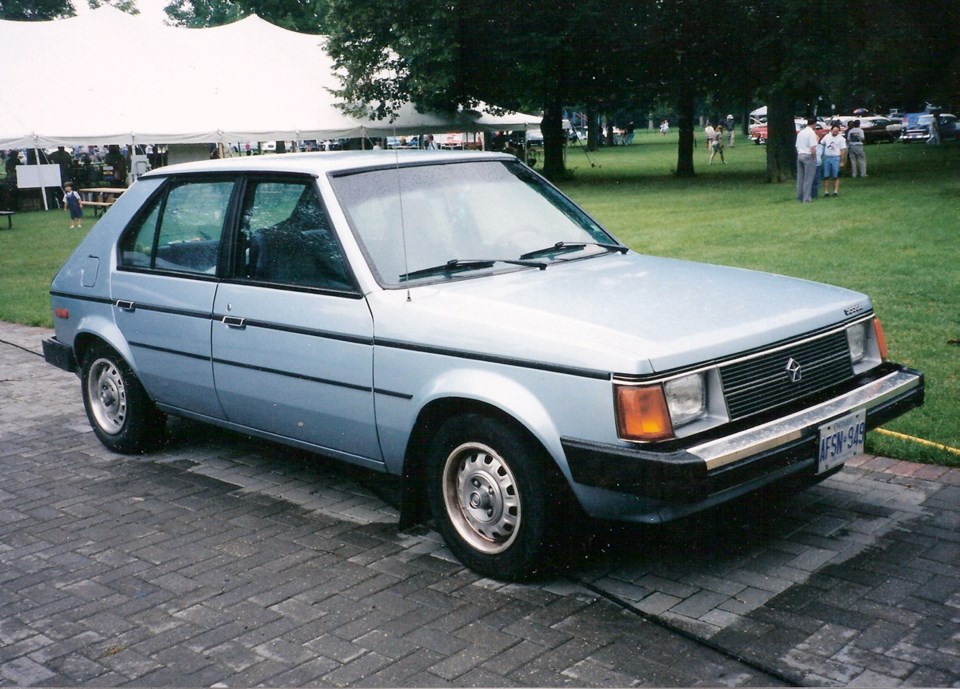In 1960, Detroit’s Big Three automakers (General Motors, Ford and Chrysler) introduced what they called compacts, Chevrolet Corvair, Ford Falcon and Chrysler Valiant, to counter growing import sales (Nash and other smaller companies had already introduced smaller cars in the 1950s).
When the compacts gave only temporary relief from the import invasion, the Big Three produced even smaller 1971 subcompacts, the Ford Pinto, Chevrolet Vega and AMC Gremlin. AMC beat Ford and GM to market by half a year by simply chopping 457 millimetres off the Hornet to create the Gremlin.
Chrysler couldn’t afford to engineer an all-new car, so it invested in Japan’s Mitsubishi and imported a model sold as the Dodge Colt. Also part owner of Rootes, it brought in a small English Rootes-built car it called the Plymouth Cricket. These “captive imports” gave Chrysler subcompacts without the expense of developing their own.
Although Chrysler’s overseas associations continued for a few years, in 1974 it began developing its own American-built subcompact, the Dodge Omni and Plymouth Horizon.
During the O/H’s development, front-wheel drive was proliferating in small cars, launched by the trend setting 1959 Austin/Morris Mini and consolidated by the Honda Civic and Volkswagen Rabbit. Placing the entire drivetrain at one end eliminated the long driveshaft and provided superior space efficiency. Chrysler followed the trend with its new subcompact.
Because it planned on marketing the O/H in England and France (Chrysler also owned part of Simca), the outline was done in England with French and American input. The project moved to Detroit in 1975 for completion.
The Volkswagen Rabbit, styled by Italy’s Giorgetto Guigiaro, was an outstanding small car and Chrysler had no qualms about “borrowing” the concept. But it wanted more interior space than was provided in Giugiaro’s “creased and folded” VW.
The unit construction O/H that emerged could be called a plumper Rabbit, but the VW association didn’t stop at styling; Chrysler used a Volkswagen overhead cam engine. Seeking a little more displacement than the Rabbit’s 1588 cc, the VW’s stroke was lengthened to provide 1716 cc.
Chrysler received engines in bare form and “dressed” them with items like a Holley carburetor (replacing VW’s Bosch fuel injection), and its Lean Burn ignition system. The transversely mounted 75 horsepower four drove the front wheels through a VW four-speed manual transaxle (a five-speed came in 1983) or optional three-speed Chrysler TorqueFlite automatic.
Suspension was MacPherson struts in front and semi-independent trailing arms and coil springs at the rear. For the North American market the spring rates were softened compared to the Rabbit’s. Steering was rack-and-pinion.
With the Omni/Horizon’s 1978 model launch Chrysler beat both Ford and GM to market with a small, domestically designed, state-of-the-art, front-drive car.
Hailed as a great leap forward, Road & Track (1/78) named it “one of Detroit’s most significant designs — ever.” Car and Driver (1/78) called lit “undeniably Chrysler’s ride to the future.”
Shortly after its introduction, the O/H received an unexpected nasty surprise when the July 1978, Consumer Reports magazine labelled it “Not Acceptable” because of “Unpredictable and possibly dangerous handling during some abrupt manoeuvres.”
The magazine concluded this by using a rather unorthodox and questionable technique. At freeway speeds the tester twisted the steering wheel approximately 90 degrees, then removed his hands from the wheel. The O/H failed to display sufficient recovery to satisfy CR.
Road & Track, feeling its integrity impugned because it had given the O/H’s handling a good rating retested the car and again found it “stable and comfortable to drive.”
U.S. National Highway Traffic Safety Administration engineers tested several O/Hs and concluded they “could not find a safety problem involving the stability and control characteristics of the Omni/Horizon cars.” CR’s proclamation was gradually forgotten and O/Hs went on to provide safe motoring for millions of drivers.
Sportier coupe versions, the Dodge Omni 024 and Plymouth Horizon TC3, were added in 1979. Coupe-based pickup truck renditions (Dodge Rampage/Plymouth Scamp) came for 1982.
A couple of years after Chrysler introduced its 1981 K-cars (Dodge Aries/Plymouth Reliant) the standard Omni/Horizon engine became a pushrod Peugeot 1.6 replacing the VW four. It would use this from 1983 to 1986.
Chrysler’s own K-car 2.2 litre overhead-cam four was optional in the O/Hs for a few years until Chrysler switched exclusively to it in 1987.
The most outlandish O/H iteration was the Dodge Omni GLH (for Goes Like Hell), a sub-compact hot rod created for Chrysler in the mid-1980s by Carroll Shelby of AC Cobra fame. It brought pony car performance to the economy-car field.
The O/H soldiered through the 1980s basically unchanged as Chrysler’s bread-and-butter economy model until it was discontinued in 1990. The O\H was good value and a pioneer by being the first small North American front-wheel drive design.



